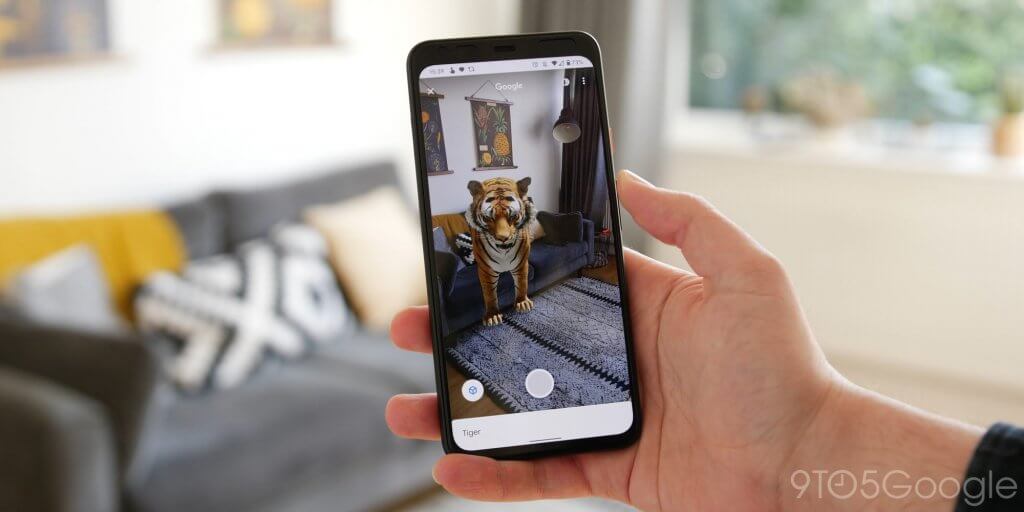Here’s a thought-provoking statistic: 70% of Snapchat users (almost 130 million) spend three or more minutes a day using augmented reality. At the same time, less than 25% of the participants in a recent survey reported interacting with AR in the past month.
AR Is Everywhere, but Users Don’t Notice It
Clearly, many people aren’t even aware that they’re using AR. How is this possible? According to a recent poll by ARtillery Intelligence, most AR users (51%) are familiar with the technology thanks to augmented reality features implemented in non-AR apps, such as Snapchat and Instagram. All those dancing hot dogs, rainbows coming out of users’ mouths, and even face masks (later removed from the apps) are only possible thanks to augmented reality.
This says something important about the spread of augmented reality: It’s fast but by no means viral. Specific filters and games may go viral, but not the technology as a whole. Ask yourself this: when buying a new smartphone, do you check in advance if it supports AR? Probably not. This indicates that we still don’t view AR as indispensable.
Is the App-Based Approach to Blame?
Back in 2014, Pepsi went viral with its bus stop AR campaign, with the video alone gathering over 8 million views on YouTube. A screen disguised as a transparent wall of the bus stop “added” gigantic robots, UFOs, and tigers to the streetscape, astounding commuters.

The secret to the campaign’s success was accessibility. You didn’t have to install an app: to experience augmented reality, you just needed to look at the screen.
Another good example is Google’s AR animals. Search “tiger” on Chrome on an ARcore-compatible phone, tap on “View in your space,” and a realistic, roaring tiger will materialize in your room. No app download necessary. No wonder 3D animals went viral during the COVID-19 lockdown.

In contrast, there are over 11,000 such apps in the App Store alone, but only a few of them are known to the casual user. The need to install an app is a strong barrier to adoption – especially if it’s not an app that you plan to use daily.
Augmented Reality Needs Clearer Marketing
According to the same ARtillery Intelligence survey cited before, the majority of non-users of mobile AR simply said that they were not interested in it. At the same time, those who do use augmented reality report very high levels of satisfaction. So why are others not willing to try it?
One issue is that the platforms that use augmented reality don’t call it that: “filters,” “lenses,” “visual search” – everything but “augmented reality.” However, users should be educated to call this technology by its proper name so that they can begin to recognize it when they see it.
A further factor is that non-users first need to be “fed” easily accessible AR experiences before they get hooked enough to seek them out. Few companies have the resources to do what Pepsi did, but there are still many ways to “trick” users into consciously trying augmented reality.
For instance, some companies offer food packages or restaurant menus with a QR code that users can scan to see a 3D character appear and talk about the product.

This is known as WebAR, and it’s much better suited for use cases like virtual try-ons and in-store retail assistance. Indeed, few customers will want to download a heavy app just to look at a few items in a store.
Will WebAR and SocialAR Finally Tip the Scales?
Almost all new smartphones are compatible with ARCore and ARKit, so the hardware is not an issue.
Augmented reality will go mainstream when two conditions are met:
- AR experiences become ubiquitous and so easy to interact with that even the least tech-savvy users are comfortable with them. This means experiencing augmented reality right in your browser and on social media, not in an app.
- AR is promoted under its proper name, not as a “lens” or “search what you see.” People need to understand the true meaning of these terms to realize that AR is all around them. This even has a scientific name: the Baader-Meinhof phenomenon. When your brain learns about something new, it starts looking for – and finding – it everywhere.
WebAR will undoubtedly play a huge role in making AR go mainstream, thanks to it being so accessible. However, brands and marketers will need to do their part, too. Ultimately, it all boils down to just two things: educating users and offering them easy AR experiences to play with.
Guest PostAbout the Guest Author(s)

Elay Romanov
AR enthusiast, CEO & co-founder at ARzilla.io, an agency that grows engagement and conversion rates with augmented reality.




